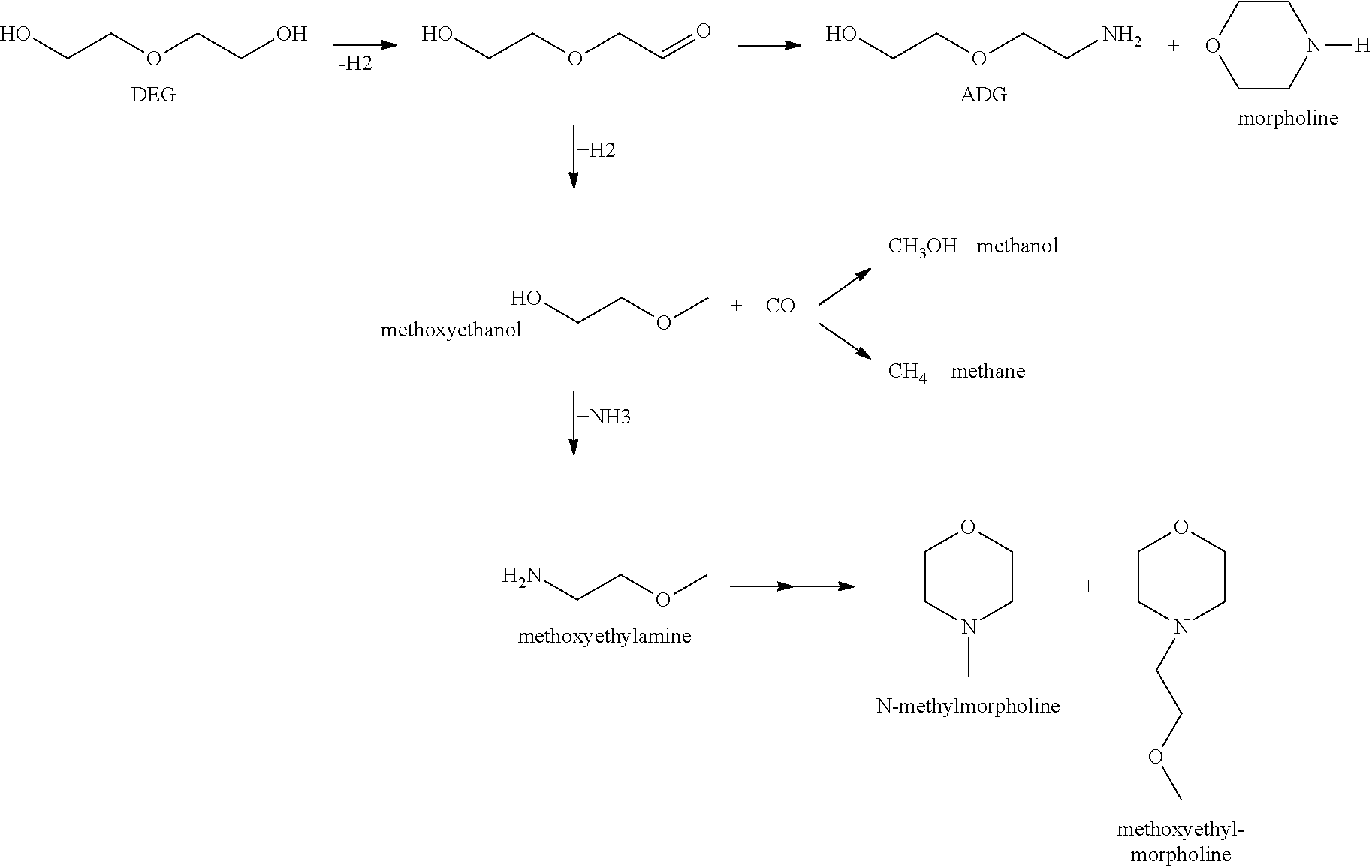Method for producing an amine
a technology of amine and amine, which is applied in the direction of organic compound/hydride/coordination complex catalyst, physical/chemical process catalyst, metal/metal-oxide/metal-hydroxide catalyst, etc., can solve the problems of specification and product quality, runaway risk, etc., and achieve high conversion, high yield, and improved economic viability of existing processes
- Summary
- Abstract
- Description
- Claims
- Application Information
AI Technical Summary
Benefits of technology
Problems solved by technology
Method used
Image
Examples
example 1
Preparation of Amination Catalyst 1 (Based on Ni—Co—Cu / ZrO2=Comparative Experiment According to EP 963 975 A)
[0196]An aqueous solution of nickel nitrate, cobalt nitrate, copper nitrate and zirconium acetate which comprised 2.39% by weight of NiO, 2.39% by weight of CoO, 0.94% by weight of CuO and 2.82% by weight of ZrO2 was precipitated simultaneously in a stirred vessel in a constant stream with a 20% aqueous sodium carbonate solution at a temperature of 70° C. in such a way that the pH, measured with a glass electrode, of 7.0 was maintained. The resulting suspension was filtered and the filtercake was washed with demineralized water until the electrical conductivity of the filtrate was approx. 20 μS. Thereafter, the filtercake was dried at a temperature of 150° C. in a drying cabinet or a spray dryer. The hydroxide-carbonate mixture obtained in this way was then heat-treated at a temperature of from 450 to 500° C. over a period of 4 hours. The catalyst thus prepared had the compos...
examples 2 to 5
[0197]The catalysts were prepared analogously to catalyst 1. However, the amount of nickel nitrate and cobalt nitrate was altered correspondingly and tin dichloride was additionally added to the nitrate solution. The catalysts 2 to 5 thus obtained had the composition as detailed in Table I.
example 6
Amination of Diethylene Glycol (DEG)
[0198]10 g of the reduced amination catalyst in the form of approx. 0.2 to 1 mm spall was initially charged in a 300 ml autoclave together with 70 g of diethylene glycol (0.65 mol). 34 g of liquid ammonia (2 mol) were added to the reaction mixture, and the autoclave was injected with hydrogen to 50 bar and heated to 200° C. At 200° C., hydrogen was again injected, and the total pressure rose to 180-200 bar. The autoclave was run at 200° C. for 12 hours with stirring.
[0199]At different times, samples of the reaction mixture were taken and analyzed by means of GC chromatography. For this purpose, a 30 m “RTX-5 amine” GC column was used, with a temperature program of 80° C. / 15 minutes, heat to 290° C. within 30 minutes, at 290° C. / 15 minutes.
[0200]The composition of the resulting reaction mixtures for the catalysts of Examples 1 to 5 can be taken from Table I.
[0201]
TABLE IPerformanceCatalyst*Amination activity**MorpholineADG / MeOEtTimeDEG conversionmm...
PUM
| Property | Measurement | Unit |
|---|---|---|
| molar ratio | aaaaa | aaaaa |
| temperature | aaaaa | aaaaa |
| absolute pressure | aaaaa | aaaaa |
Abstract
Description
Claims
Application Information
 Login to View More
Login to View More - R&D
- Intellectual Property
- Life Sciences
- Materials
- Tech Scout
- Unparalleled Data Quality
- Higher Quality Content
- 60% Fewer Hallucinations
Browse by: Latest US Patents, China's latest patents, Technical Efficacy Thesaurus, Application Domain, Technology Topic, Popular Technical Reports.
© 2025 PatSnap. All rights reserved.Legal|Privacy policy|Modern Slavery Act Transparency Statement|Sitemap|About US| Contact US: help@patsnap.com



